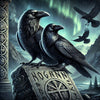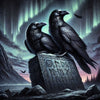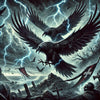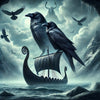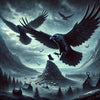Unveiling the Secrets: The Power of Odin Viking Symbols
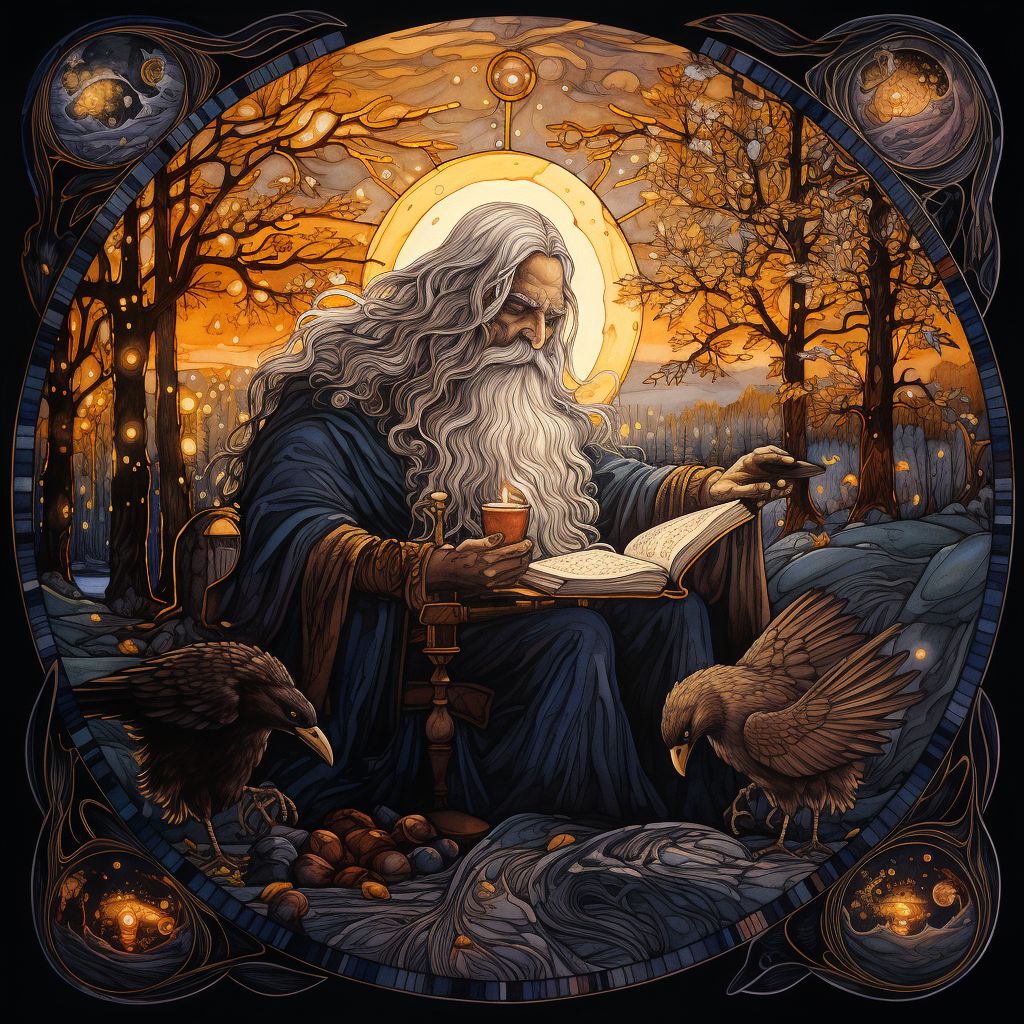
The Significance of Odin in Norse Mythology:
To understand the depth and power of Odin Viking symbols, we first need to grasp the central role Odin plays in Norse mythology. Often referred to as the Allfather, Odin stands as the chief god of the Aesir tribe, a pantheon of deities in Norse cosmology.
Odin embodies a complex fusion of qualities. He is a god of war, wisdom, poetry, and death, among other domains. This multifaceted nature is reflected in the symbols associated with him, each representing a facet of his character.
Odin's influence extends beyond the realms of the gods and into the lives of humans. He is often invoked by warriors seeking guidance and strength in battle, as well as by poets and scholars in their search for creativity and insight. The depth of his impact on Norse culture and belief is mirrored in the enduring legacy of the symbols associated with him.
As we delve into the individual symbols linked to Odin, we'll uncover the layers of meaning and power they carry, shedding light on the enigmatic allure of this revered god.
Huginn and Muninn: Odin's Thought and Memory Ravens:
In the realm of Norse mythology, Odin's wisdom is unparalleled, and at the heart of this wisdom are his faithful companions: Huginn and Muninn, the thought and memory ravens.
Huginn: The Raven of Thought
Huginn, whose name translates to "thought" in Old Norse, embodies Odin's insatiable intellectual curiosity. This raven soars across the Nine Worlds, gathering information and insights from every corner of existence. It represents the ceaseless mental activity and contemplation that define Odin's quest for knowledge.
With keen, perceptive eyes, Huginn scrutinizes the world, observing the subtleties that often escape notice. It symbolizes the power of critical thinking and reflection, encouraging seekers of wisdom to engage in deep contemplation and introspection.
Muninn: The Raven of Memory
Muninn, meaning "memory," complements Huginn's ceaseless thought. This raven serves as Odin's repository of knowledge, faithfully retaining the experiences, stories, and revelations that Huginn brings back. Muninn represents the importance of memory and the preservation of wisdom gained from past experiences.
With Muninn by his side, Odin possesses an unbroken chain of knowledge, transcending time and space. This symbolizes the wisdom of learning from history and cherishing the lessons of the past.
Together, Huginn and Muninn are inseparable companions, working in harmony to provide Odin with a complete understanding of the world. Their flight through the realms embodies the boundless potential of human thought and memory, urging us to explore the depths of our own intellects and cherish the lessons of our personal histories.
The symbolism of these ravens is a testament to Odin's commitment to the pursuit of wisdom, reminding us of the value of intellectual curiosity and the importance of cherishing our own experiences and the wisdom they bring. As we unravel the layers of Odin Viking symbols, Huginn and Muninn serve as a powerful reminder of the profound impact that thought and memory hold in the quest for knowledge and enlightenment.
Yggdrasil: Odin's World Tree and Cosmic Connection:
At the heart of Norse cosmology stands Yggdrasil, the World Tree, a colossal and ancient ash tree that binds together the Nine Worlds of existence. This magnificent arboreal wonder is more than a physical entity—it is a living embodiment of the interconnectedness of all things in the Norse universe.
Yggdrasil's roots extend deep into the realms of the dead, connecting the physical world, the spiritual realms, and the primordial forces that underlie creation. Its branches stretch skyward, touching the celestial realms where gods and other ethereal beings reside.
Odin's association with Yggdrasil is profound and multi-faceted. As the Allfather, he is deeply intertwined with the fabric of existence, and Yggdrasil serves as a reflection of his quest for cosmic wisdom and understanding. It is beneath the sheltering canopy of Yggdrasil that Odin sought enlightenment, often sacrificing his own well-being in his relentless pursuit of knowledge.
The World Tree also represents the cyclical nature of life, death, and rebirth—a fundamental concept in Norse cosmology. It serves as a reminder that existence is a continual process of transformation, where all beings and realms are inextricably linked in a cosmic dance.
As we contemplate the symbolism of Yggdrasil, we are invited to consider our own place in the grand tapestry of existence. Like the World Tree, we too are connected to the myriad threads of life, each of us playing a unique role in the unfolding drama of the cosmos.
Yggdrasil, with its roots in the underworld and branches in the heavens, stands as a testament to the interconnectedness of all things. It serves as a poignant reminder of the profound wisdom that can be gleaned from understanding our place in the grand scheme of the universe.
In its shadow, we find solace in the knowledge that we are part of something much greater than ourselves—a cosmic symphony that resonates through the ages.
Valknut: Odin's Knot of the Slain Explained:
Amidst the rich tapestry of Odin's symbols, the Valknut stands as a potent emblem shrouded in mystery and power. Comprising three interlocking triangles, this symbol is often associated with Odin's role as a god of war, death, and the afterlife.
The name "Valknut" is derived from Old Norse, where "valr" means "slain warriors" and "knut" signifies "knot". Together, they form a symbol that embodies Odin's connection to the brave souls who meet their end in battle. It serves as a visual representation of the fate of warriors, who are chosen by Odin to join him in Valhalla, the hall of the honored dead.
Each of the three triangles in the Valknut is intertwined, representing the interplay of life, death, and rebirth. This tripled form symbolizes the cyclical nature of existence and the unbreakable bonds that tie together these fundamental aspects of mortal experience.
For Odin, the Valknut is a symbol of his role as a chooser of the slain. It is a mark of his favor, signifying those who are destined for a heroic afterlife in the company of the gods. In this way, the Valknut serves as both a promise and a reminder of the eternal legacy that awaits those who face death with courage and honor.
As we explore the symbolism of the Valknut, we are called to reflect on our own perceptions of mortality and the legacy we hope to leave behind. It prompts us to consider the ways in which we confront the inevitability of death and find meaning in our own mortal journey.
The Valknut, with its intricate design and profound symbolism, stands as a testament to the enduring power of Odin's influence. It serves as a reminder that even in the face of mortality, there is a transcendent legacy that can be forged through courage, honor, and a willingness to confront the mysteries of existence.
Conclusion: The Enduring Influence of Odin Viking Symbols:
As we carry forward the legacy of Odin Viking symbols, we do so with a profound understanding of the enduring influence they hold. They are not simply icons of a distant past, but beacons that illuminate the path to wisdom, courage, and the eternal quest for enlightenment. In their symbolism, we find a timeless resonance that continues to shape the hearts and minds of those who dare to seek, to question, and to honor the legacy of Odin.



